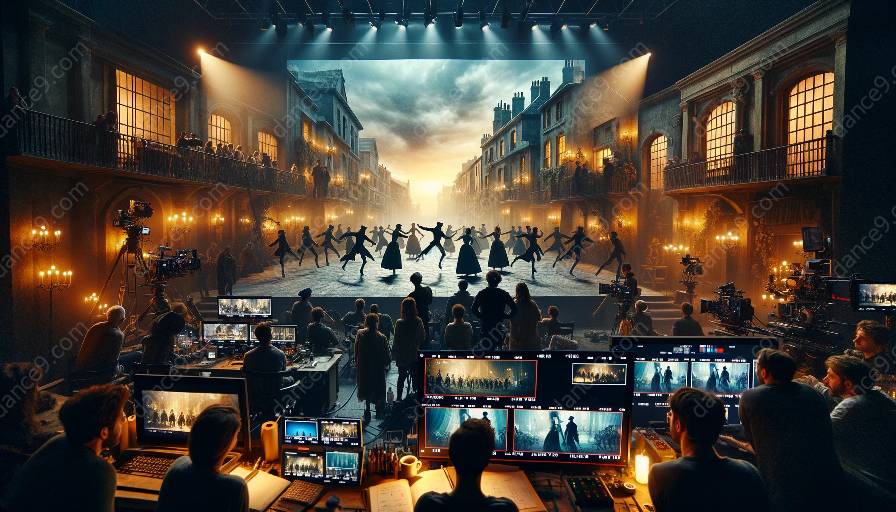Choreography in film and television presents a unique challenge for choreographers as they navigate the delicate balance between artistic expression and commercial demands. This topic explores how choreographers blend the art of dance with the practical requirements of film and television production, highlighting the complexities and creative strategies they employ.
Understanding Choreography for Film & Television
Choreography for film and television involves creating and coordinating dance sequences specifically tailored for the camera. Unlike live performances, choreographers in this context must consider camera angles, editing techniques, and storytelling elements while maintaining the integrity of the choreographic vision.
The Artistic Aspect
Artistic expression lies at the core of choreography, serving as a means of conveying emotions, storytelling, and thematic elements through movement. Choreographers strive to infuse their work with creativity, originality, and depth, aiming to evoke genuine emotional responses from audiences.
Commercial Demands and Industry Realities
While artistic expression is paramount, choreographers operating in the film and television industry must also address commercial demands. This includes aligning their creative vision with the needs of producers, directors, and clients, considering budget limitations, time constraints, and marketability.
Strategies for Balancing Artistic Expression and Commercial Demands
Choreographers use a variety of strategies to strike a harmonious balance between artistic expression and commercial demands. They may collaborate closely with directors and cinematographers to understand the visual language of the project, adapt choreography to fit within production constraints, and leverage their creative expertise to add value to the final product.
Adaptability and Versatility
Choreographers must demonstrate adaptability and versatility in their approach, being able to pivot between artistic exploration and logistical problem-solving. This might involve modifying choreography to accommodate technical requirements or adjusting movement patterns to suit the capabilities of performers and filming locations.
Communication and Collaboration
Effective communication and collaboration are essential for choreographers as they navigate the intersection of art and commerce. Building strong working relationships with production teams and performers allows choreographers to advocate for their artistic vision while addressing the practical realities of the industry.
Market Awareness and Audience Engagement
Choreographers must possess a keen understanding of market trends and audience preferences, integrating this knowledge into their creative process. By aligning their choreography with commercial appeal and audience engagement, choreographers can enhance the impact and marketability of their work.
Case Studies and Industry Insights
Exploring case studies and industry insights provides valuable context for understanding how choreographers successfully navigate the interplay between artistic expression and commercial demands in film and television. Real-world examples of innovative choreographic approaches, industry trends, and collaborative triumphs shed light on the dynamic nature of this creative process.
Conclusion
Choreography for film and television represents a captivating blend of artistry and pragmatism, requiring choreographers to continuously adapt and innovate as they balance their artistic vision with the demands of the industry. By delving into the intricate dynamics of this balancing act, we gain a deeper appreciation for the creativity and resilience of choreographers striving to leave their mark on the screen.






































